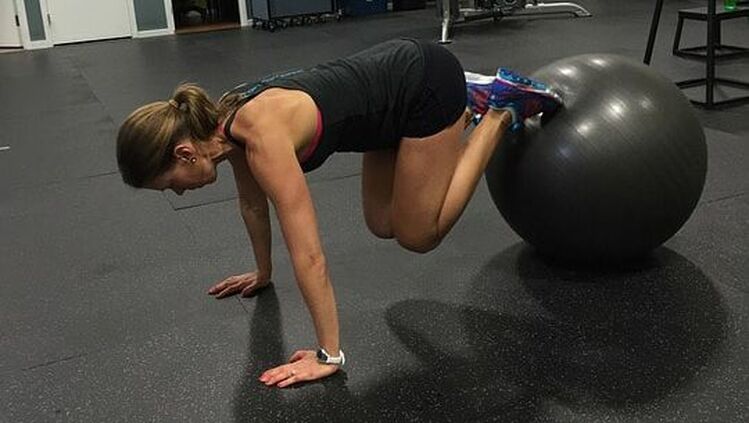THE THORACOLUMBAR / ABDOMINAL CONNECTION: HOW IMPORTANT IS IT FOR CORE STABILITY?

Last week the journal Clinical Anatomy published a study titled Anatomical and Functional Relationships Between the External Abdominal Oblique Muscle and the Posterior Layer of the Thoracolumbar Fascia. Allow me to help break down the abstract and show you yet another reason that the diamond-shaped THORACOLUMBAR FASCIA is so important.
The abdominal muscles are important for the stability of the lumbar region through the thoracolumbar fascia (TLF). CT images from 10 cadavers and 27 subjects were used to evaluate the continuity of the TLF with the abdominal muscles.
The epimysial fascia of the EO was in direct continuity with the posterior layer of the TLF in eight cadavers and 23 CT images, whereas in two cadavers and four CT images the epimysial fascia of the EO first fused with the fascia covering the latissimus dorsi, and then both fasciae were in continuity with the posterior layer of the TLF.
Therefore, the fascial continuity of the EO could explain the transmission of tension from the EO to the posterior layer of the TLF and its importance in maintaining the stability of the lumbar spine through a hydraulic effect. through the aponeurosis and fascia, which ensures synchronization between the erector spinae and the rectus abdominis.
What’s the point? There are several. For starters, understanding the way the the three layers of the TLF move by gliding on each other (HERE), helps you realize why low back surgery can be so problematic (HERE) and why articles geared at helping you avoid said surgeries can be potential life savers. You’ve always heard that strong abdominal muscles help stabilize the spine? It’s true and the opening sentence above helps explain why. It’s because the abdominal muscles work through the Thoracolumbar Fascia.
The EPIMYSIUM — the outermost layer of fascia that surrounds individual muscles — of the external obliques are, in the vast majority of cases, continuous with the outermost layer of the Thoracolumbar Fascia. And in those where it’s not, it’s continuous with the lats, which can be seen in the above left picture from Gray’s Anatomy (Anatomy of the Human Body — 1918) attached to the TLF. In other words, in one way or another, it’s all one big continuous tissue.
Although they do not deal with it in the abstract, the external obliques are continuous with the rectus abdominus (above right). Not sure what an APONEUROSIS is? Just click the link. Bottom line, we have a built-in “belt” of muscles and very tough connective tissues (FASCIA) that surround our midsection, stabilizing us and protecting us as we lift, bend, twist, sit, etc.
“Regarding fascial continuity in the trunk, and taking the EO into consideration, the TLF is formed by the fascia of all the abdominal muscles as the rectus sheath. In this manner, myofascial continuity between the TLF and the abdominal muscles is achieved.”
This is why you can no longer think of muscles as we used to think of muscles; strictly in terms of O, I and A.
Individual muscles have historically been viewed according to their origin (their chief attachment point that acts as an anchor), their insertion (the secondary attachment point that generally moves when the muscle contracts), and their action (the direction or plane that the muscles and attached bodyparts move in upon muscle contraction).
I couldn’t find the exact quote, but fascia researcher and author of ANATOMY TRAINS, Tom Meyers, said it something like this. We can no longer think of the body as 700 individual muscles, but as one muscle in 700 continuous pockets of fascia. What does this mean for you besides helping you better understand concepts like UPPER CROSSED SYNDROME and LOWER CROSSED SYNDROME?
For one, it means that you probably need to train your fascia differently than you have been. Are you engaged in some sort of STRETCHING or YOGA, while avoiding CRUNCHES? Are you doing some strength training from a ball (HERE)? Are you doing some functional training on a ball (HERE)? There are a nearly infinite number of YouTube videos showing variations of these sorts of exercises.
Something that I personally enjoy is getting in plank position like the picture in the middle, with my legs / feet on my ball and my hands on a VIBRATION PLATE. From that position I can build core strength by manipulating the ball with my legs in an endless number of ways (rolling back and forth, side to side, obliquely, piking my butt in the air to pull the ball up to my hands, etc). I can also do many of the same exercises the opposite way, belly up, with my calves on the ball and my hands on the vibration plate.
The bottom line, taking care of your back is a multifaceted endeavor, which I have talked about at length HERE. And it’s not just about doing a bunch of exercises. If you want to avoid a buildup of fibrosis (SCAR TISSUE) in your low back and elsewhere, you’ll have to deal with your systemic inflammatory load (HERE), which will affect your back for the better in multiple ways.
For those of you looking to put it all together into a comprehensive and unified package, I’ve created a completely free post for you as well (HERE). It’s certainly not a “cure all,” but out of the one hundred million Americans coping with some degree of chronic pain, it’s going to help point the vast majority of you in the right direction. If there is someone you know or love who needs to see today’s post, just remember that liking, sharing, or following on FACEBOOK is typically a great way to reach them.
